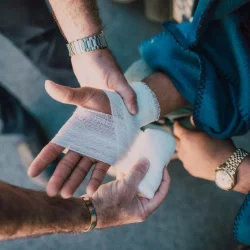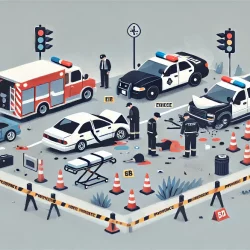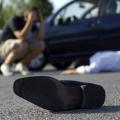Steps to Take if the Other Driver Denies Fault After an Accident
Being involved in a car accident is stressful enough, but the situation becomes even more complicated when the other driver denies fault. Whether they genuinely believe they weren’t responsible or are trying to avoid liability, their denial can significantly impact your ability to recover compensation. Knowing how to respond and what steps to take can make a significant difference in proving your case and protecting your rights.
Here’s a comprehensive guide on what to do if the other driver denies fault after an accident.
Why Do Drivers Deny Fault?
Drivers may deny fault for several reasons, including:
- Fear of increased insurance premiums
- Potential legal consequences
- Lack of awareness about how the accident occurred
- Advice from their insurance company to avoid admitting liability
Regardless of the reason, it’s essential not to engage in an argument at the scene. Instead, focus on gathering evidence and protecting your interests.
1. Stay Calm and Prioritize Safety
Immediately after the accident, your top priority should be safety:
- Check for injuries: Call 911 if anyone is hurt.
- Move to a safe location: If possible, move vehicles out of traffic to prevent further collisions.
- Turn on hazard lights: Alert other drivers to prevent additional accidents.
Staying calm is crucial, especially if the other driver becomes confrontational. Avoid admitting fault or making statements that could be used against you later.
2. Call the Police and File a Report
Even if the other driver wants to “handle it without the police,” insist on filing a police report. The responding officer will document the scene, gather statements, and create an objective account of the accident.
Why the police report matters:
- Provides an impartial third-party account
- Records details about the accident, including time, location, and weather conditions
- May include the officer’s initial assessment of fault
- Serves as valuable evidence when filing an insurance claim or pursuing legal action
Tip: Ask for the officer’s name, badge number, and how to obtain a copy of the report.
3. Gather Evidence at the Scene
If you’re physically able, collect as much evidence as possible at the accident scene. This information can be crucial in proving fault, especially when the other driver denies responsibility.
What to document:
- Photos and videos: Capture vehicle damage, license plates, road conditions, skid marks, and traffic signs.
- Driver information: Exchange names, addresses, phone numbers, driver’s license numbers, and insurance details.
- Witnesses: Obtain contact information from anyone who saw the accident. Eyewitness statements can be powerful evidence.
- Environmental details: Note weather conditions, lighting, and any surveillance cameras nearby.
Tip: Use your phone’s voice memo feature to record your immediate recollection of the events while they’re fresh in your mind.
4. Notify Your Insurance Company Promptly
Contact your insurance company as soon as possible to report the accident. Provide them with:
- Details of the accident
- The other driver’s information
- Photos and evidence collected
- The police report number (once available)
Be honest and concise, but avoid admitting fault or speculating about the cause of the accident. Your insurer will investigate the claim and communicate with the other driver’s insurance company.
5. Be Wary of the Other Driver’s Insurance Company
If the other driver’s insurer contacts you, proceed with caution. Adjusters may:
- Request a recorded statement (which could be used against you)
- Offer a quick settlement to close the case cheaply
- Attempt to downplay your injuries or damages
Tip: Politely decline to give recorded statements without legal counsel. Direct all communication through your attorney to avoid potential pitfalls.
6. Obtain Surveillance Footage (If Available)
Nearby businesses, traffic cameras, or residential security systems may have captured the accident. Surveillance footage can be compelling evidence when disputing fault.
- Act quickly: Footage is often deleted or recorded over within days.
- Contact property owners: Request copies of any relevant video recordings.
- Inform your attorney: They can issue subpoenas if necessary.
7. Seek Medical Attention and Document Injuries
Even if you feel fine, see a doctor promptly after the accident. Some injuries, like whiplash or concussions, may not show immediate symptoms.
- Medical records provide vital evidence linking your injuries to the accident.
- Follow all treatment plans and keep copies of bills and prescriptions.
- Document how injuries affect your daily life and work.
Delaying treatment can not only jeopardize your health but also weaken your claim, as insurers may argue that your injuries aren’t related to the accident.
8. Consult a Personal Injury Attorney
When fault is disputed, having an experienced personal injury attorney can significantly improve your chances of securing fair compensation. An attorney can:
- Investigate the accident thoroughly
- Gather additional evidence (e.g., accident reconstruction experts)
- Communicate with insurance companies on your behalf
- File a lawsuit if negotiations fail
Most car wreck lawyers in Milwaukee offer free consultations and work on a contingency fee basis, meaning you don’t pay unless they win your case.
9. Consider Accident Reconstruction Experts
In complex cases, accident reconstruction specialists can analyze:
- Vehicle damage patterns
- Skid marks and debris placement
- Road conditions and weather factors
- Impact speeds and angles
Their reports and testimony can provide authoritative support for your version of events, especially when facing strong opposition from the other party.
10. Prepare for Potential Litigation
If the other driver and their insurance company continue to deny fault, filing a personal injury lawsuit may be necessary. Litigation can help:
- Hold the at-fault driver accountable
- Present evidence in court for an impartial judgment
- Recover damages for medical expenses, lost wages, and pain and suffering
Your attorney will guide you through the legal process and advocate for your best interests every step of the way.
Common Scenarios Where Drivers Deny Fault
Drivers often deny fault in situations like:
- Rear-end collisions: The rear driver is typically at fault, but some may claim you stopped suddenly.
- Intersection accidents: Disputes often arise over who had the right of way.
- Merging or lane-change accidents: Each driver may blame the other for unsafe maneuvers.
- Parking lot accidents: With no traffic signals, determining fault can be challenging.
In these scenarios, witness statements, video footage, and police reports are vital in proving liability.
Dealing with an accident where the other driver denies fault can be frustrating and overwhelming. However, taking the right steps early on can make all the difference in protecting your rights and securing fair compensation.
- Stay calm and gather evidence.
- File a police report and notify your insurer.
- Seek medical attention, even if injuries seem minor.
- Consult a personal injury attorney for guidance and representation.
If you’re facing a fault dispute after a car accident, don’t navigate it alone. Contact an experienced personal injury attorney who can fight for your rights and help you achieve the compensation you deserve.
More to Read:
Previous Posts:




